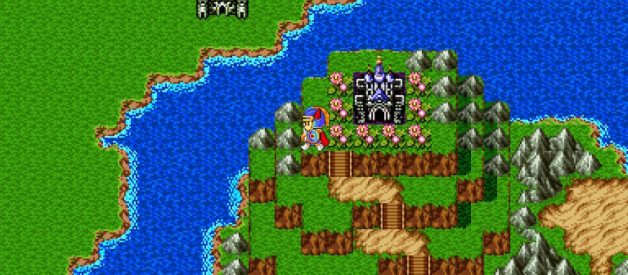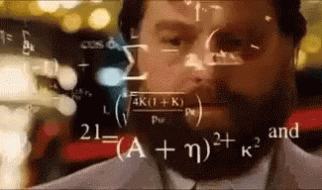Dost Thou Wish to Grind?
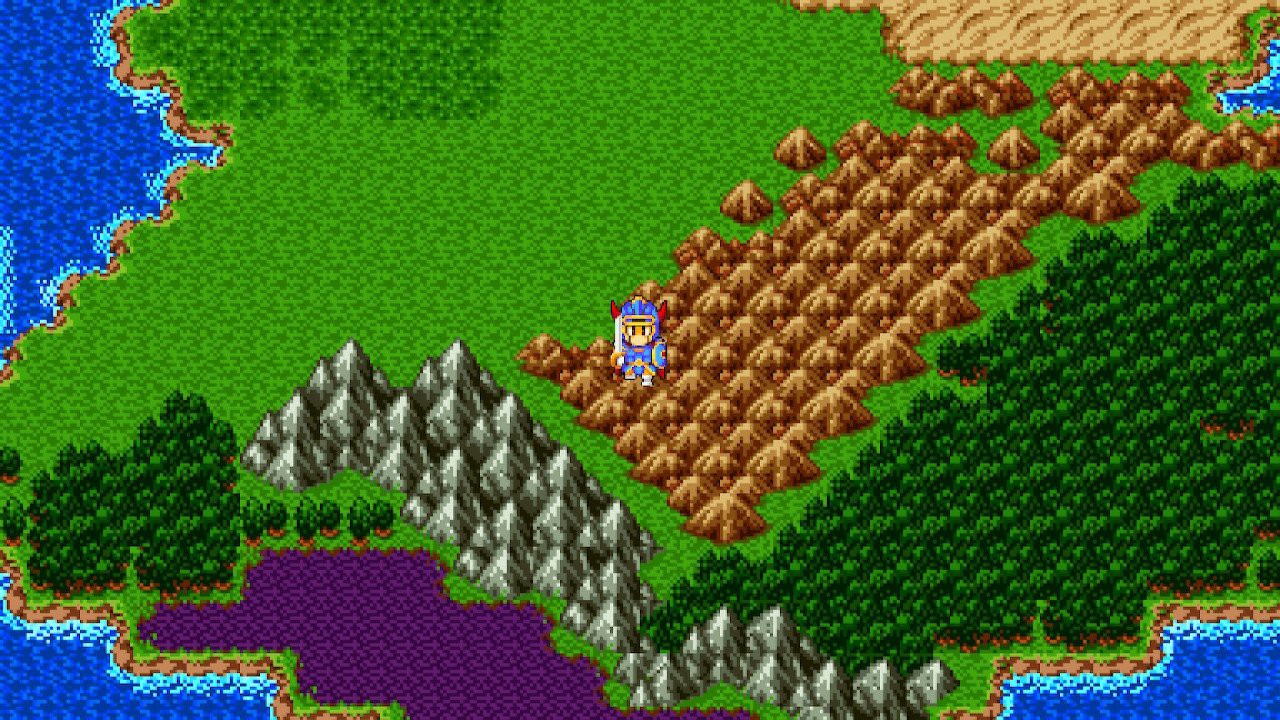 Screen captured by me on a Nintendo Switch
Screen captured by me on a Nintendo Switch
Dragon Quest 1 is a true icon of the RPG genre, with a design that?s still surprisingly relevant over three decades on from its release.
I revisit it every few years.
Starting out as a Famicom game in 1986, Dragon Quest is widely recognized as the first turn-based console RPG, and thus is also where many JRPG tropes were born.
But its design is impressive in other ways.
Dragon Quest presents a large open map with several towns and dungeons to visit, and a big multi-floor castle at the end containing the last boss.
Getting to that boss requires both a lot of grinding to level up, and collecting a series of magical items. And that?s it. There?s no side quests, no optional objectives, just a focused pure quest experience.
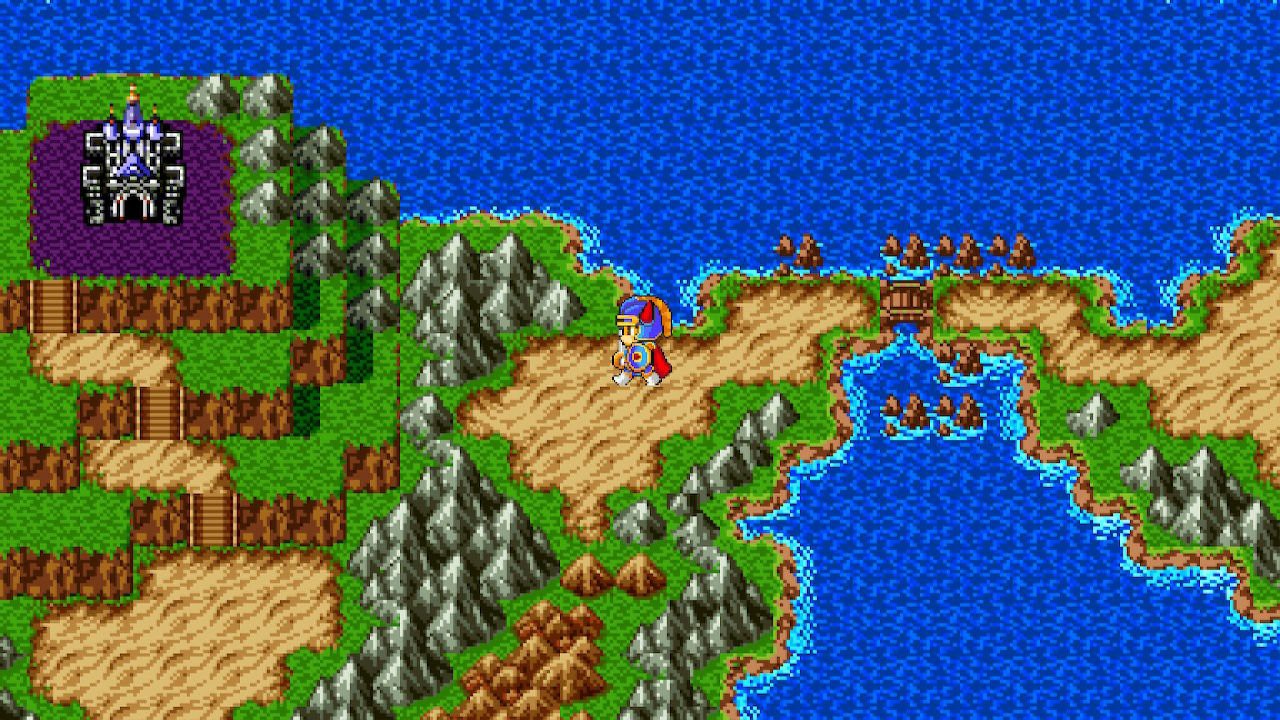 Building that little bridge to get to this evil castle requires a comical series of item collection that would be at home in a point-and-click adventure. But it?s great. Screen captured by me on a Nintendo Switch.
Building that little bridge to get to this evil castle requires a comical series of item collection that would be at home in a point-and-click adventure. But it?s great. Screen captured by me on a Nintendo Switch.
There?s no prescribed order for collecting some of those magical items, and you have to learn their locations by talking to different townsfolk around the world, or by getting lucky.
This version makes finding some of those items a little easier with sparkly highlights on certain interactive tiles.
The story is basic and full of classic fantasy tropes.
You?re the chosen hero, most likely the direct descendant and/or reincarnation of Dragon Quest?s legendary champion, Erdrick. The evil Dragon Lord has stolen an important magical orb, allowing monsters to invade the land, and he?s also kidnapped the King?s daughter, Princess Gwaelin.
The King charges you with saving the princess and stopping the Dragon Lord.
I?ve never really understood why the bad guy locks himself in a castle that?s only accessible by finding several magical objects rather than terrorizing the land, but it at least presents a good goal to shoot for.
Maybe he?s so confident in his monsters that he?s content to just sit around?
Fighting those monsters constitutes the vast majority of the game?s 8-ish hour run time, as collecting the items you need to get to the end boss only takes around 30 minutes, and is even faster if you use a guide or remember where they are.
The combat is classic grindy turn-based goodness.
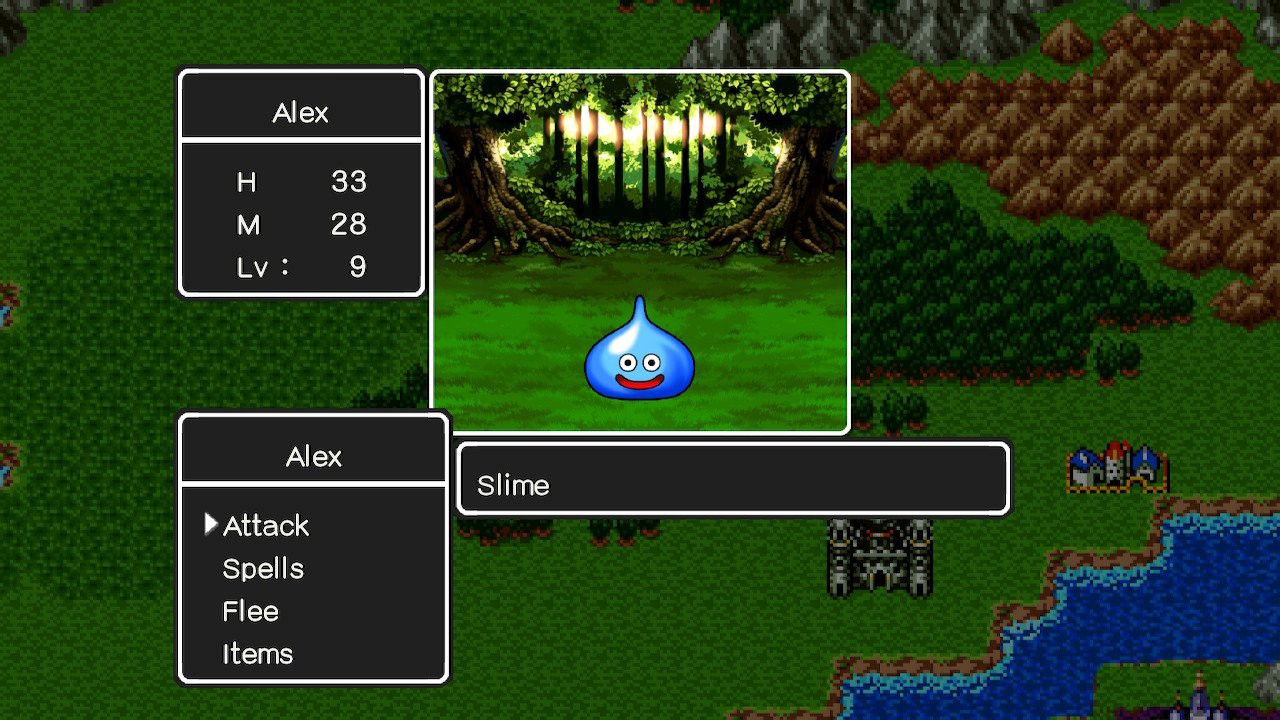 The slime is Dragon Quest?s most iconic enemy, though here you?ll only fight them in the very first area of the game. Screen captured by me on a Nintendo Switch.
The slime is Dragon Quest?s most iconic enemy, though here you?ll only fight them in the very first area of the game. Screen captured by me on a Nintendo Switch.
You can attack with your current weapon, use a selection of 8 different spells you?ll unlock through play, or try to flee. Combat plays out through hidden dice rolls with results presented in text at the bottom of the screen.
If you like modern games about watching numbers go up, you?ll be right at home here.
This Switch version has the most in common with the mobile versions released a few years ago. That means it has some quality of life improvements, like the sparkles mentioned earlier and streamlined menus.
However, it also has the slightly higher difficulty featured previously in the Super Famicom and Game Boy remakes. The boss monsters have more health and higher resistances than the monsters in the NES original, and you?ll probably have to reach experience level 20 or 21 out of the cap of 30 before you can fight every monster in the game successfully.
Dragon Quest really is all about pleasant, gentle grinding through endless combat.
It?s the ultimate chill JRPG, with no true ?difficulty? aside from spending your time powering up.
If you die, you?ll get teleported back to the castle and lose half your current gold, but that?s it.
Well, that and the King will gently chastise you and tell you to heal at an inn.
If you devote enough time to it, and don?t get frustrated with the maze-like dungeons or weird item fetch quest, you?ll eventually finish the game.
The English conversion of the original game was famous for its over-use of goofy theatrical ?Old English? text, and this port doubles down on that decision, though the writing is a little cleaner and easier to quickly scroll through.
Visually, the game shares the new artwork of the mobile versions, but it?s reformatted for a 16:9 ratio, and to look good on both the Switch?s handheld screen and a TV without any scaling issues.
The font choices are nice and big regardless of your screen choice.
The colors and designs are clear and bold, and I think the artwork is right in line with the style of the original art, successfully evoking old pixel art while also having much more detail than older games.
Some folks don?t like the changed visuals, and I can understand that.
I think it would have been awesome if this port included the option to use the older graphics from earlier releases, just so players could see what those looked like.
The underlying game is exactly the same, so I don?t think this would have been tremendously hard to implement, but this is clearly a low budget port of the mobile game reformatted for these resolutions.
And perhaps users wouldn?t have liked the 4:3 ratio of the original visuals, I don?t know.
The music also comes from that recent mobile version, and presents nicely synthesized re-creations of the original tracks. They sound great, and that?s good?because you?ll be hearing the same music tracks over and over for 8 hours.
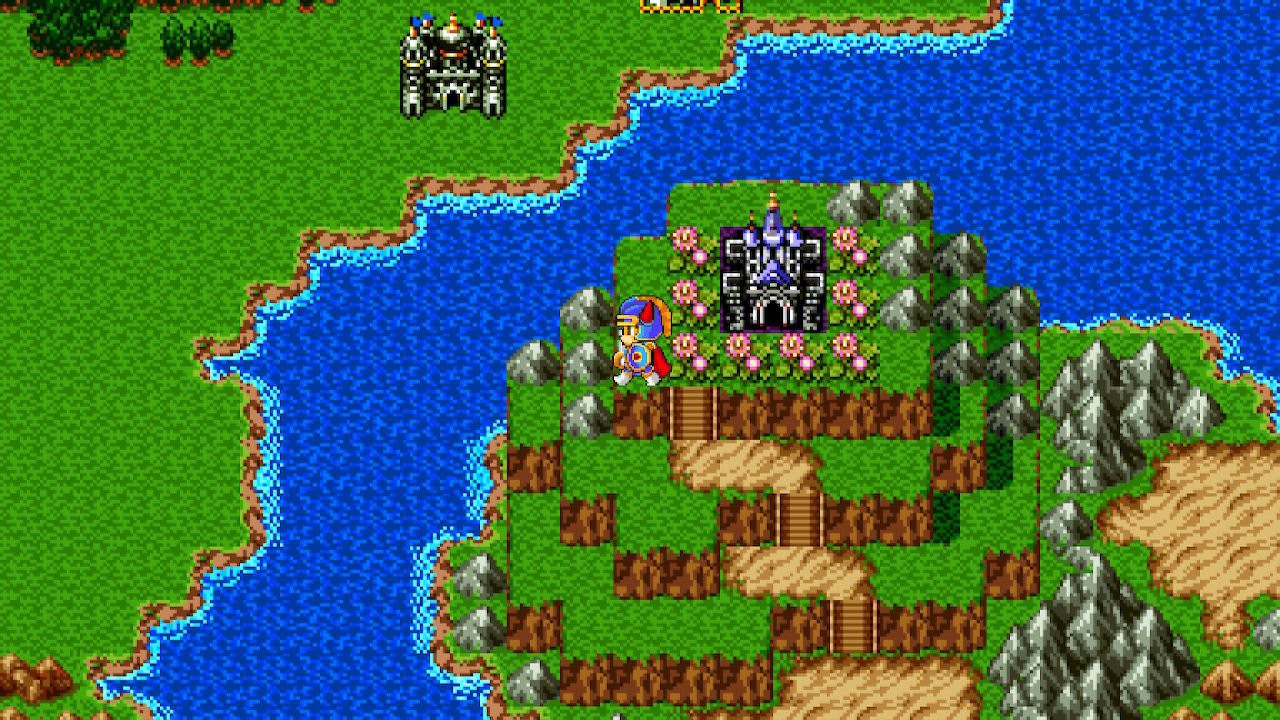 Once you defeat the Dragon Lord, the game goes on for a little bit to wrap up its story, which is a nice and forward-thinking touch. Screen captured by me on a Nintendo Switch.
Once you defeat the Dragon Lord, the game goes on for a little bit to wrap up its story, which is a nice and forward-thinking touch. Screen captured by me on a Nintendo Switch.
I put on some gaming podcasts I?ve been meaning to catch up on and proceeded to grind my way through the game, and it was as pleasant a time as it?s always been.
The open design feels far more modern than it has any right too for a 1986 video game, and only a couple of decisions irked me here in 2019.
The dark dungeons can be pretty frustrating, and the torches and glow spell both wear off quickly, necessitating yet another trip into the menus.
Keys in the world of Dragon Quest 1 are all magical, and disintegrate into dust upon use. Also, if you leave an area and come back, all the locked doors return.
This lead to a few moments where I forgot to bring a key with me, or didn?t bring enough keys with me?but I guess you could argue that?s also down to me not remembering the item-gathering sequences as well as I thought I did.
Aside from those small complaints, Dragon Quest 1 is still a true classic of the RPG genre and it?s not hard to see why. The Switch version goes for five bucks and that?s a more than fair price for the amount of game here.
If you hate grinding or want something with the elaborate loot progression of modern games, you should run the other way.
But if you want to see the origins of the modern JRPG, and get some backstory that?s surprisingly relevant to current Dragon Quest games, then this is an easy choice to make.
It?s not at all a thrill-a-minute experience, but rather a fun, relaxing adventure.
